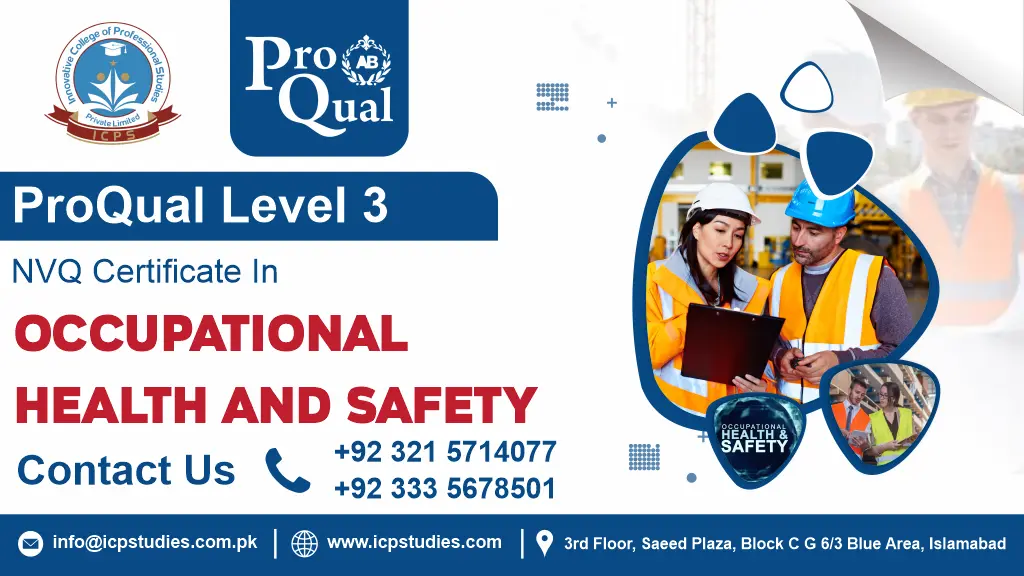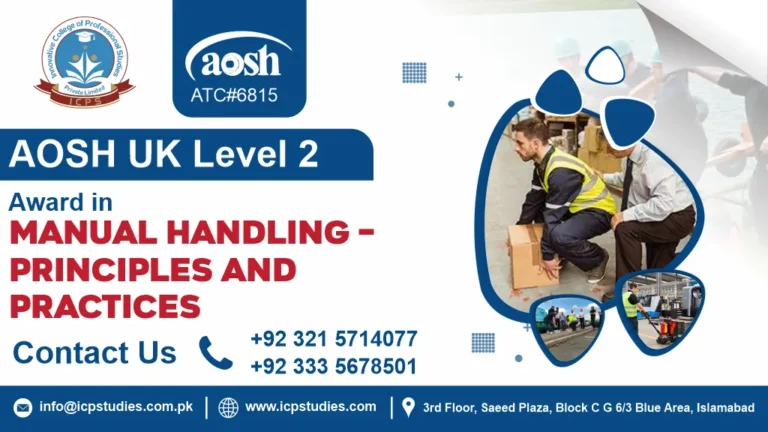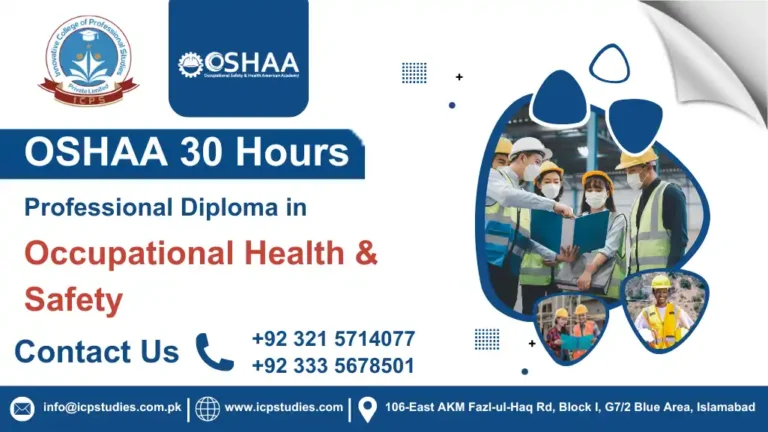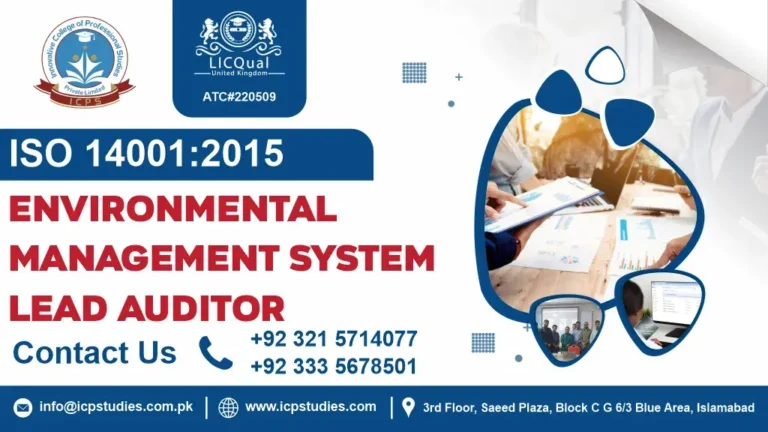Be proactive, prevent accidents
Occupational health and safety (OHS) is crucial in maintaining a safe working environment and ensuring the well-being of employees across all industries. The ProQual Level 3 NVQ Certificate in Occupational Health and Safety provides professionals with the skills, knowledge, and practical experience to take on roles related to workplace safety management. This Ofqual-regulated UK-based certification is designed for those looking to advance their careers in health and safety, offering a globally recognized qualification that is assignment-based, allowing students to learn at their own pace and apply their learning to real-world situations.
The ProQual Level 3 NVQ Certificate in Occupational Health and Safety is an essential qualification for professionals looking to build a career in the health and safety sector. With its assignment-based, Ofqual-regulated, and UK-based certification, it offers practical, work-based learning that equips learners with the skills to implement effective health and safety practices in the workplace.
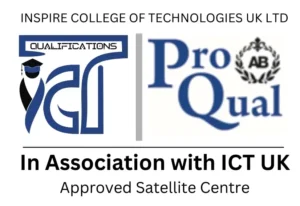
Innovative College of Professional Studies (Private) Limited (ICPS) is offering ProQual Qualifications in association with Inspire College of Technologies (ICTQual)
All About ProQual Level 3 NVQ Certificate In Occupational Health and Safety
Course Overview
Occupational health and safety (OHS) plays a pivotal role in ensuring a safe and healthy work environment for employees, contractors, and visitors. A well-managed health and safety system helps reduce workplace accidents, enhance productivity, and ensure compliance with regulatory standards. For professionals seeking to develop expertise in OHS and advance their careers in this essential field, the ProQual Level 3 NVQ Certificate in Occupational Health and Safety provides the perfect qualification.
This UK-based, Ofqual-regulated certification is an assignment-based program designed for individuals working in health and safety roles or those looking to move into this field. The ProQual Level 3 NVQ Certificate in Occupational Health and Safety equips learners with the practical skills and knowledge necessary to effectively manage health and safety risks in various industries. This globally recognized qualification not only strengthens your understanding of key OHS principles but also enhances your career prospects in the health and safety sector.
In this blog post, we will delve into the course introduction, explaining what the ProQual Level 3 NVQ Certificate in Occupational Health and Safety entails and how it can significantly benefit both individuals and organizations.
Key Takeaways
The entry requirements for the ProQual Level 3 NVQ Certificate in Occupational Health and Safety typically include:
- Educational Background:
- A minimum of 4 GCSEs at grade C/4 or above (or equivalent), including English and Mathematics.
- Alternatively, a Level 2 qualification in Occupational Health and Safety or a related field may be accepted.
- Professional Experience:
- While specific work experience may not be mandatory, some experience in an occupational health and safety role is beneficial.
- Current Role:
- Applicants should ideally be employed in a role that allows them to gather evidence for the NVQ assessment process.
- English Language Proficiency:
- Proficiency in English (both written and spoken) is necessary. Non-native speakers may need to provide evidence of their language skills (e.g., an IELTS score of 5.5 or equivalent).
- Motivation Statement:
- A personal statement outlining the applicant’s interest in occupational health and safety and how the course will support their career goals may be encouraged.
Mandatory Units
Learning Outcomes
Upon successful completion of the ProQual Level 3 NVQ Certificate in Occupational Health and Safety course, learners will be able to:
1. Ensure Responsibility for Actions to Reduce Risks to Health and Safety
- Demonstrate understanding of personal responsibilities under health and safety legislation and workplace policies.
- Identify potential hazards and take proactive measures to minimize risks in daily work activities.
- Apply safe working practices to reduce the likelihood of accidents or injuries.
- Understand the consequences of non-compliance with health and safety regulations on individuals and the organization.
- Promote accountability by encouraging colleagues to take responsibility for their own safety and the safety of others.
2. Develop Procedures to Safely Control Work Operations
- Design clear, effective, and practical procedures to manage workplace risks and hazards.
- Ensure procedures comply with current health and safety legislation, regulations, and industry best practices.
- Integrate control measures into work processes to prevent accidents and occupational illnesses.
- Identify the resources, equipment, and training required to implement safety procedures effectively.
- Continuously review and update procedures to reflect changes in workplace operations or regulatory requirements.
3. Monitor Procedures to Safely Control Work Operations
- Establish monitoring systems to evaluate the effectiveness of health and safety procedures.
- Conduct regular inspections and audits to ensure procedures are being followed correctly.
- Identify weaknesses or gaps in current procedures and recommend improvements.
- Collect and analyze data on incidents, near-misses, and workplace hazards to inform safety decisions.
- Ensure corrective actions are implemented promptly to maintain a safe working environment.
4. Promote a Culture of Health and Safety in the Workplace
- Communicate the importance of health and safety effectively to all team members.
- Lead by example to encourage adherence to safe working practices.
- Organize training sessions, workshops, or awareness campaigns to foster safety culture.
- Encourage employee engagement in identifying risks and suggesting improvements.
- Evaluate the impact of safety initiatives on workplace behavior and continuously seek opportunities to enhance safety culture.
5. Conduct a Health and Safety Risk Assessment of the Workplace
- Identify all potential hazards within the workplace, including physical, chemical, biological, and ergonomic risks.
- Assess the likelihood and severity of risks associated with identified hazards.
- Develop and implement appropriate control measures to mitigate or eliminate risks.
- Document risk assessment findings in a clear and systematic manner for management review and compliance purposes.
- Review and update risk assessments regularly to reflect changes in work practices, equipment, or regulations.
The ProQual Level 3 NVQ Certificate in Occupational Health and Safety is designed for:
- Entry-Level Health and Safety Practitioners: Individuals starting their careers in health and safety who want to develop foundational knowledge and skills.
- Health and Safety Assistants: Those supporting health and safety officers or managers in implementing safety policies and procedures.
- Safety Officers: Individuals in junior roles responsible for monitoring and promoting health and safety practices within organizations.
- Supervisors and Team Leaders: Managers looking to enhance their understanding of health and safety regulations and practices to ensure a safe working environment.
- Employees in High-Risk Environments: Workers in industries such as construction, manufacturing, or healthcare who want to improve their understanding of health and safety.
- Quality Assurance Personnel: Individuals involved in ensuring compliance with safety standards within their organizations.
FAQs Related to ProQual Level 3 NVQ Certificate In Occupational Health and Safety

